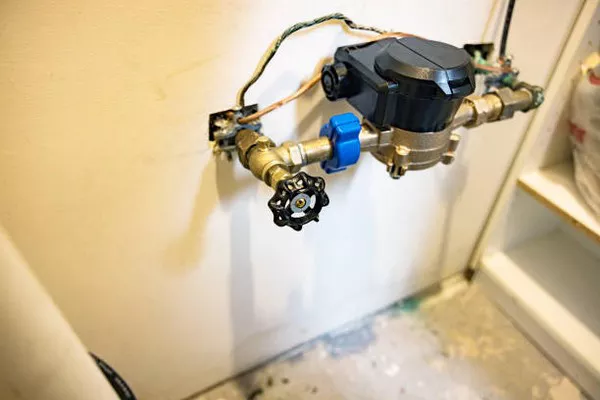Air flow meters, often overlooked but critically important devices, play a pivotal role in various industries and applications, from automotive engineering to HVAC systems and industrial manufacturing. These instruments serve a fundamental purpose: measuring the rate at which air flows through a particular point in a given system. In this comprehensive guide, we will delve into the inner workings of air flow meters, exploring their types, principles of operation, and widespread applications.
The Significance of Air Flow Measurement
Before diving into the mechanics of air flow meters, it’s essential to understand why precise air flow measurement is vital across various industries. In many industrial processes and systems, the flow of air (or other gases) must be carefully controlled to ensure efficiency, safety, and compliance with regulations. Some key applications include:
Automotive Industry: In modern vehicles, air flow meters help regulate the air-fuel mixture in the engine for optimal combustion, improving fuel efficiency and reducing emissions.
HVAC Systems: Heating, Ventilation, and Air Conditioning systems rely on air flow meters to maintain the desired temperature and air quality in buildings.
Industrial Processes: Industries such as pharmaceuticals, chemicals, and food production depend on precise air flow measurement for processes like drying, ventilation, and packaging.
Environmental Monitoring: Air flow meters are used to monitor and control emissions from industrial facilities, ensuring compliance with environmental regulations.
Aerospace: In aircraft, air flow meters are critical for measuring airspeed, altitude, and maintaining safe cabin pressure.
Types of Air Flow Meters
Air flow meters come in various types, each tailored to specific applications and operating principles. Here are some common types:
Anemometers: These are commonly used in weather stations and HVAC systems. Anemometers measure air speed by measuring the rotation rate of a propeller or cups placed in the air stream.
Thermal Mass Flow Meters: These meters utilize the cooling effect of a fluid stream to measure flow rate. As air flows past a heated sensor, it cools the sensor, and the cooling effect is directly proportional to the flow rate.
Vortex Flow Meters: Vortex flow meters use the principle of vortex shedding. As fluid flows past an obstruction (called a shedder bar), it creates alternating vortices. The frequency of vortex shedding is proportional to the flow rate.
Pitot Tubes: Commonly used in aircraft and HVAC systems, Pitot tubes measure airspeed by comparing the dynamic pressure (ram pressure) and static pressure of the air.
Orifice Plates: These simple devices consist of a plate with a hole (orifice) through which the fluid flows. The pressure drop across the orifice is measured and used to calculate flow rate.
How Air Flow Meters Work
To understand how air flow meters work, let’s explore two common types: thermal mass flow meters and vortex flow meters.
Thermal Mass Flow Meters
Thermal mass flow meters operate on the principle of convective heat transfer. Here’s a step-by-step explanation of their operation:
Heating Element: The meter contains a heated sensor or probe. This sensor is maintained at a constant temperature above the ambient temperature.
Cooling Effect: As air flows through the meter and past the heated sensor, it carries away heat from the sensor due to convective cooling. The rate of heat transfer is directly proportional to the mass flow rate of the air.
Temperature Sensors: The meter also includes temperature sensors to measure the temperature of the heated sensor and the ambient temperature.
Calculations: By comparing the temperature difference between the heated sensor and the ambient air, along with the known heat capacity of the sensor, the meter calculates the mass flow rate of the air.
Output: The meter provides an output signal, often in digital or analog form, indicating the measured flow rate.
Vortex Flow Meters
Vortex flow meters, on the other hand, operate based on the phenomenon of vortex shedding. Here’s how they work:
Shedder Bar: Inside the flow meter, a shedder bar is strategically placed in the path of the fluid flow.
Vortex Formation: As fluid flows past the shedder bar, it alternately separates from one side and creates vortices. These vortices form at a specific frequency directly related to the flow rate.
Sensor Detection: The meter contains a sensor, often a piezoelectric crystal or strain gauge, which detects the pressure fluctuations caused by the vortices.
Signal Conversion: The pressure fluctuations are converted into an electrical signal by the sensor.
Flow Rate Calculation: The meter’s electronics analyze the frequency of the detected pressure fluctuations and use it to calculate the flow rate of the fluid.
Output: Like thermal mass flow meters, vortex flow meters provide an output signal representing the flow rate.
Applications of Air Flow Meters
Air flow meters find applications across a wide range of industries due to their accuracy and reliability. Some notable applications include:
Automotive: In vehicles, air flow meters help manage the air-fuel mixture, ensuring optimal engine performance and fuel efficiency.
HVAC Systems: Air flow meters maintain temperature and air quality in buildings, improving comfort and energy efficiency.
Environmental Monitoring: Industries use air flow meters to measure emissions and ensure compliance with environmental regulations.
Industrial Processes: Air flow meters control processes like drying, ventilation, and gas flow in manufacturing.
Aerospace: Air flow meters are critical for measuring airspeed, altitude, and cabin pressure in aircraft.
Conclusion
Air flow meters are indispensable tools in a wide range of applications, ensuring precise control and measurement of air or gas flow rates. Understanding their types, principles of operation, and significance in various industries is crucial for engineers, technicians, and professionals working in fields where air flow control is essential. As technology continues to advance, the accuracy and capabilities of air flow meters will only improve, further enhancing their importance in industrial processes and daily life.

